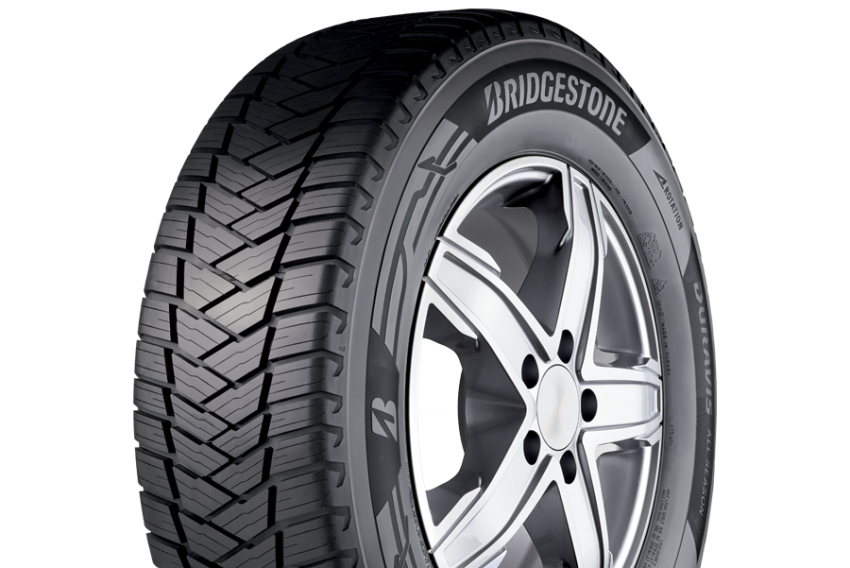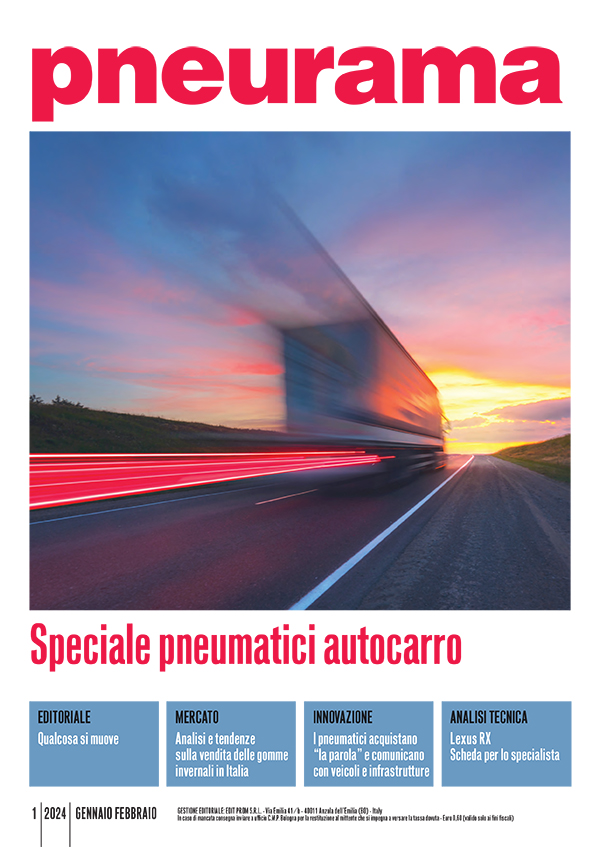 With a service network of over 6000 workshops in the Emia market, Bridgestone is a major player in the tire market both as OE and replacement. During the latest edition of IAA Transportation, where every manufacturer had at least one electric or hydrogen-powered vehicle, along with many new manufacturers making their first appearance, Pneurama asked Vice President Mark Tejedor Young to outline the next expected developments in the market.
With a service network of over 6000 workshops in the Emia market, Bridgestone is a major player in the tire market both as OE and replacement. During the latest edition of IAA Transportation, where every manufacturer had at least one electric or hydrogen-powered vehicle, along with many new manufacturers making their first appearance, Pneurama asked Vice President Mark Tejedor Young to outline the next expected developments in the market.
Alternative drive systems represent a new set of challenges for commercial vehicles. Will tires need to change?
"Absolutely, not only because of how vehicles are evolving technologically and the spread of electrically powered vehicles. A lower rolling resistance, which has been a commitment of ours for at least 25 years, is still a vital objective and is a must also for more traditional vehicles with combustion engines. Even regulations, which play a significant role in the evolution of tires, focus on all kinds of vehicles and not only on alternative drive systems. We are able to forecast both technical and legal developments thanks to our close relationship with car manufacturers and fleet managers, which is essential for the development of innovative products. Along with them, we evaluate every possible avenue and solution for greater profitability and sustainability of our products, while Fleetline services help us in collecting the necessary data for product development".
What are the most pressing needs for new generation of vehicles, and EVs in particular?
"Electrically powered vehicles are the reason behind some of the greatest changes, particularly in terms of robustness and durability. Because of the batteries and new driveline layouts, which differ greatly from ICE vehicles, the weights are greater and also distributed differently. This greatly influences the structure of the casings. In addition, the torque produced by an electric motor is much higher than that of an internal combustion engine and practically constant at any speed. Energy recovery when braking requires the tire to transmit forces in the opposite direction, from the road to the drive train. All this results in premature tread wear, as well as increased stress on the casing, particularly on the drive axle.
Which transport sectors, and consequently which vehicles, will switch to electricity first?
"Very likely daily urban deliveries and short/medium-haul routes: light commercial vehicles used in last mile deliveries, garbage trucks and buses which have been the object of this transition for some time. Consequently, we must have tires ready for electrically driven vehicles across the board, without forgetting that the urban environment brings with it other requirements, such as a sturdy casing, and sidewalls and treads able to absorb any impact due to potholes and pavements. At a later stage, we could see electric motors being used in other working environments such as construction sites with some off-road sections, and here cement mixers could be the recipient of this new technological transition. All these requirements added together means we have to think of an 'electric ready' tire that is, first and foremost, a very robust object.
However, robustness is not the only main feature in the development of the new tires...
"Certainly not. There are at least two other crucial requirements. First, noise levels: electric motors produce very little noise therefore the buzz produced by a rolling tire becomes noticeable, hence the need to reduce it. Second, friction: a tire with a lower rolling resistance uses less energy and at the same time provides a more efficient energy recovery when braking.
Is Bridgestone ready to meet all these needs?
"Yes. Bridgestone Enliten technology, available from this year in the Ecopia line is our response to the challenge. Our Rome and Tokyo research centres worked together on its development; the results were reduced tire weight, longer lifespan, lower rolling resistance, increased load capacity and, thanks also to the higher percentage of natural rubber, greater recyclability. Furthermore, the company's in-house sustainability office optimised the entire production process. By 2024, we also plan to extend the Enliten technology to the Duravis range for regional transport, which will be followed by the new UAP3 global bus tire and, finally, a few models from the Firestone range, in particular for the 22.5". The overall offer of the two brands will cover applications for 17.5", 19.5" and 22.5" wheels.
On the other hand, what can we expect for long-haul trucks?
"We do not foresee a significant number of electric applications any time soon. We can expect some evolution in the field, but we have to give the infrastructure and storage systems time to develop in a direction that makes recharging faster and easier.
Speaking of sizes, have you noticed any evolution in market demand?
"Sure. The e-commerce explosion, which is far from over, has led to an increase in demand for light commercial vehicle tires. Also, as online trading keeps growing, we can foresee a greater interest in medium-sized vehicles, 7.5 to 12 t, which have a more favourable tare/load capacity ratio than 3.5 t. Once again, however, regulations will dictate the changes in this sector.
Are the demands of manufacturers and fleets going in the same direction?
"On the whole we can say yes, but with different attentions to different aspects. The manufacturers are primarily concerned with CO2 emissions, especially after the introduction of rating systems such as Vecto. Fleet managers, on the other hand, are more interested in durability”.
Will data be increasingly important?
'The whole industry of the future will be data driven. In our industry, collecting the operating parameters of a tire will help its proper management, predictive maintenance and correct replacement timing. This is why we have developed new sensors to complement traditional Tpms sensors, which detect temperature and pressure. Our new sensors can record, for example, the weight on each individual tire and consequently assess stress and wear. Furthermore, thanks to Rfid tags, we can track the entire life of the tire. Thanks to our ongoing collaboration with vehicle manufacturers and fleet managers, our digital solutions are able to communicate with the manufacturers' proprietary systems and fleet management systems'.
Will predictive maintenance transform service networks?
"Of course. Today tire dealers sell tires and small maintenance services. Tomorrow they will have to rely on predictive maintenance as well as digital services and solutions that will evolve quickly. They will have to familiarize with the vehicle's electronic network and sensors... in short, their evolution will be similar to what was experienced by mechanics and electricians who, in recent years, were transformed in mechatronic specialists".


